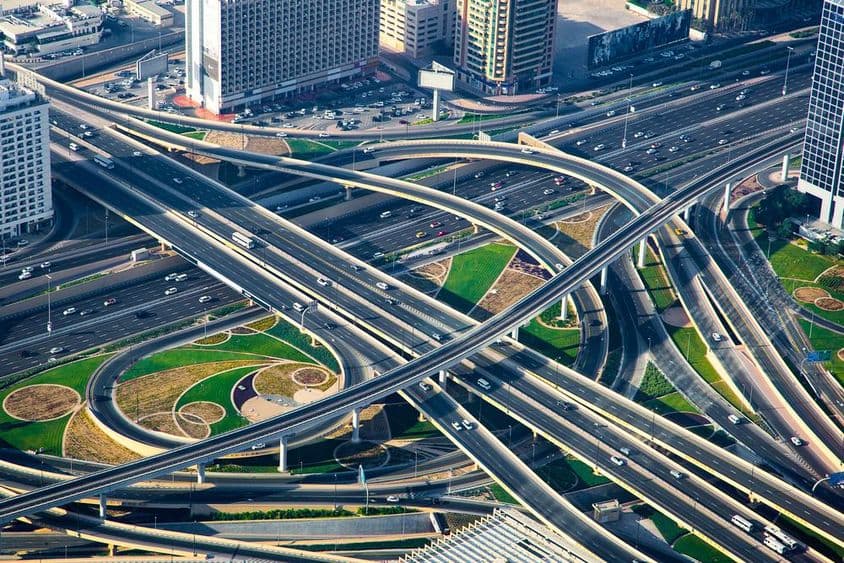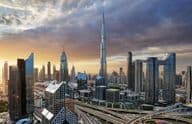Dubai's Al Qudra Project Cuts Travel Time

New Bridges and Road Enhancements in Al Qudra – Travel Time Under 3 Minutes
Dubai is continuously developing, and now a significant new development project has been introduced, which not only improves the city's transport network but also enhances the quality of life for residents and visitors. The aim of the Al Qudra Street Development Project is to significantly reduce travel times, increase road capacity, and contribute to Dubai's rapid urban expansion. The project costs 798 million dirham and will directly affect approximately 400,000 residents and visitors in key residential and commercial areas.
Project Details and Objectives
The Al Qudra Street Development Project includes numerous significant infrastructure developments, including new bridges, road surface expansions, and junction modernizations. As part of the project, travel time along Al Qudra Street will reduce from 9.4 minutes to just 2.8 minutes, marking a huge leap forward in transport efficiency.
The development includes:
- A construction of a 2700-meter new bridge,
- A 11.6-kilometer road surface expansion,
- And significant modernization of several junctions.
Emphasizing the strategic significance of the project, Mattar Al Tayer, Director General of the Roads and Transport Authority (RTA), highlighted that the development affects several key areas, such as Arabian Ranches 1 and 2, Dubai Motor City, Dubai Studio City, Akoya, Mudon, DAMAC Hills, and Sustainable City. These areas are not just residential but also commercial and industrial centers, thus contributing to economic growth.
Improving Transport Efficiency
One of the most important elements is the development of the junction between Al Qudra Street and Dubai Studio City. Here, a 600-meter bridge will be built with four lanes in each direction, increasing the road capacity from 6,600 to 19,200 vehicles/hour. Additionally, waiting time will significantly reduce from 113 seconds to 52 seconds, greatly enhancing traffic flow.
Another key part of the project is the development of the intersection between Al Qudra Street and Sheikh Zayed bin Hamdan Al Nahyan Street. A 700-meter bridge will be constructed here, with seven lanes in each direction and auxiliary lanes for smooth transitions. This development increases the street's capacity from 7,800 to 19,400 vehicles/hour, and the waiting time reduces from 393 seconds to 60 seconds.
Further Developments and Future Plans
During the project, a 500-meter bridge will also be built to facilitate traffic between Al Qudra Street and Sheikh Zayed bin Hamdan Al Nahyan Street towards Jebel Ali. Additionally, a 900-meter bridge will be created to assist traffic at the intersection of Al Qudra Street and Sheikh Zayed bin Hamdan Al Nahyan Street towards Downtown Dubai and Dubai International Airport.
The project focuses not only on major roads but also on expanding smaller road surfaces. For example, 3 kilometers of service roads will be built along Sheikh Zayed bin Hamdan Al Nahyan Street, improving connections to surrounding development areas.
Further developments are anticipated in the future, including the construction of a 4.8-kilometer road linking the southern part of the development zone to Emirates Road. This step will further increase connectivity with surrounding areas and contribute to the comprehensive development of the transport network.
Summary
The Al Qudra Street Development Project not only improves transport efficiency but also contributes to Dubai's sustainable development. Infrastructural developments, new bridges, and road surface expansions realized during the project will significantly reduce travel times, increase road capacity, and enhance traffic safety. This development offers tremendous benefits not only for local residents but also for visitors to the city, while contributing to economic growth in surrounding areas.
Dubai once again proves that modern infrastructure and an efficient transport network are key elements of a dynamically developing city. The Al Qudra Street Development Project is another step towards the city's goal of becoming one of the world's most advanced and livable cities.
If you find any errors on this page, please let us know via email.


